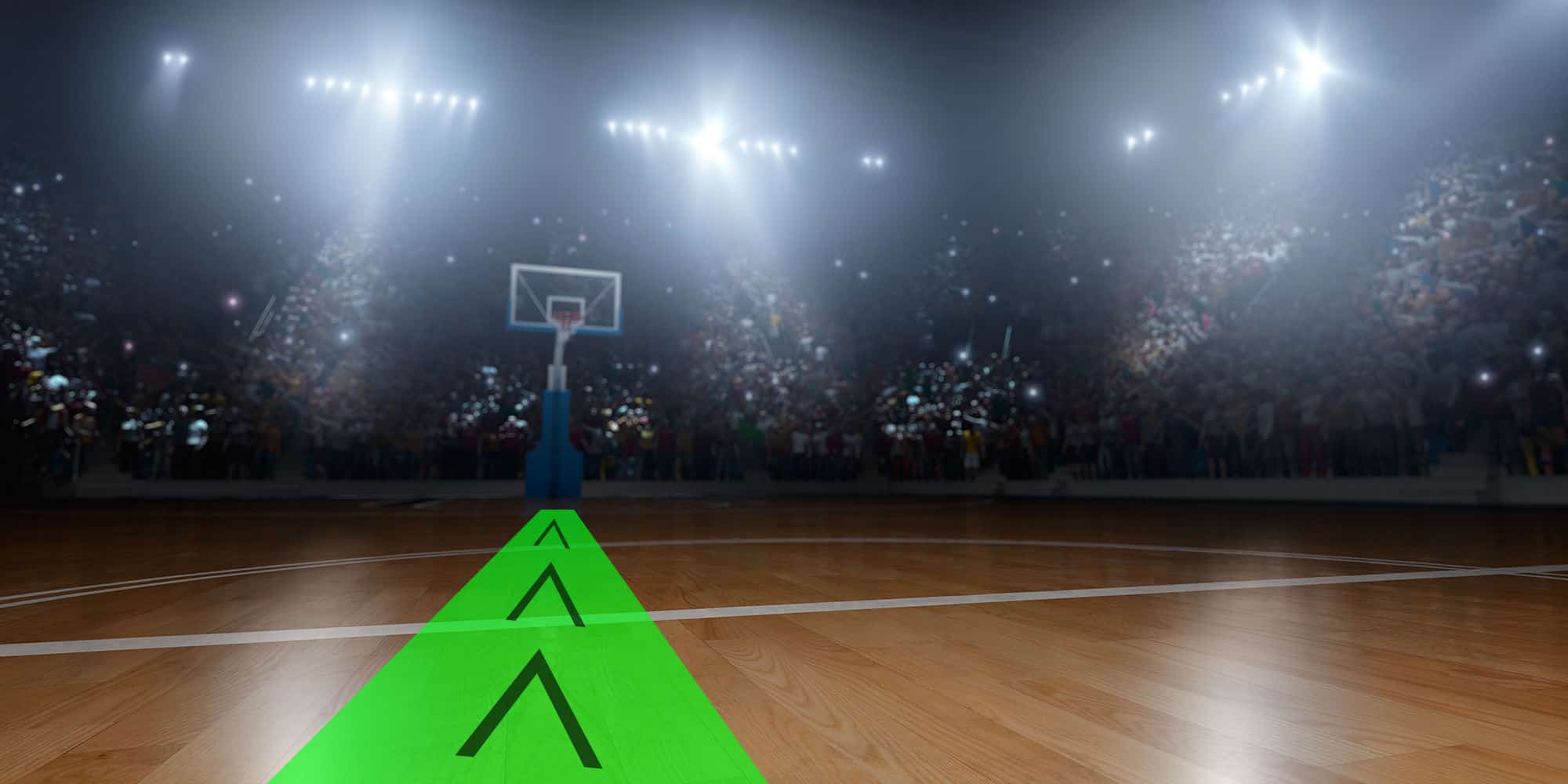Every basketball fan has seen their fair share of controversial foul calls (or non-calls). The common ones, the techs, the flagrants, you’ve probably argued every type of foul by now.
But there’s one type of foul that is so obvious and so bad of a play that even fans of the team it gets called against won’t argue. Of course, I’m talking about the clear path foul.
Both the NBA and FIBA have their own versions of the rule. The NBA rule was seen by some as sometimes unnecessary penalizing defenders, such as in situations where they’re legitimately trying to intercept a pass and bump into an opponent from behind. So let’s define this rule and see why it’s been the subject of controversy.
Definition of a Clear Path Foul
Fortunately, the NBA’s clear path rule was simplified in 2018 to make officiating more consistent and reduce harsh punishments for legit basketball plays. Here’s the new NBA definition:
A clear path foul is defined as a personal foul against any offensive player during his team’s transition scoring opportunity in the following circumstances:
- The ball is ahead of the tip of the circle in the backcourt
- No defender is ahead of the offensive player with the transition scoring opportunity
- The player with the transition scoring opportunity is in control of the ball (or a pass has been thrown to him)
- and if the foul deprives his team of an opportunity to score.
Basically, if a fast break starts in a team’s backcourt and an offensive player with no defenders ahead of them gets fouled by a defender from behind, a clear path foul is called.
Here’s a video example of a clear path foul being called:
What’s the point of the clear path foul?
As you can see from the definition and the above video, a defender fouling an attacker with an almost guaranteed scoring opportunity ahead should warrant a bigger punishment than a common foul.
Think about it, awesome dunks in transition are some of the most awe-inspiring plays in basketball. Fouling players who have a clear path ahead of them not only destroys the flow of the game, but can impact the momentum of the game. Plenty of NBA games have had that one play that energizes one team and completely deflates the other.
You’ll agree that, without a clear path rule, one personal foul would be a small price to pay for avoiding a huge shift in momentum.
If we didn’t have the concept of a clear path foul, and a foul in that situation was instead deemed a common foul, it would reward defensive players. It would give them a chance to set up and defend in the half-court instead of paying the price for their turnover or lack of hustle getting back.
Simply put, the clear path foul rule was introduced to prevent defenders from taking the easy way out in transition and destroying the flow of the game, and to reward the offense for a steal.
One more thing that many fans disregard is the potential for injury. Getting fouled from behind, especially when you’re going full speed, can lead to some gruesome injuries that have the potential to end careers.
You’ll probably agree that preventing a dunk isn’t worth sending someone to the hospital and potentially endangering their entire career.
As a result, the clear path foul exists to punish defenders who try this act and make sure the offense is appropriately rewarded.
What’s the penalty for committing a clear path foul?
We’ve already established that clear path fouls are a pretty big deal, so it’s only natural to have the punishment fit the crime. And it does.
If you commit a clear path foul, the other team gets two free throws (a.k.a. foul shots) AND possession. Given how well most NBA players shoot free throws, that usually translates to at least two points. Make a three on the ensuing possession and you got yourself a five-point swing.
It might seem harsh to have an equally severe punishment as a technical foul or flagrant foul, but the league needs a big punishment if it is to truly deter defenders from committing clear path fouls.
The harshness of this punishment is why referees will often review a potential clear path foul multiple times to make sure they get the call right. That leads to delays and further breaks the flow of the game.
That’s why many NBA fans hate seeing this call and it’s fortunate that clear path fouls aren’t that common.
Note that in NCAA college basketball there is no such thing as a clear path foul, but the referee might call an intentional foul in many similar situations.
When was clear path foul introduced?
The NBA’s clear path foul definition (which they sometimes refer to as Clear-Path-To-The Basket-Foul) has gone through several modifications over the years. The latest modification made by the NBA Board of Governors was to extend the rule to apply to fouls in the backcourt as well. This was introduced in the 2018-2019 season, but the rule dates back much further than that.
According to the NBA’s website on the history of rule changes, the first mention of the clear path rule dates back to the 1984-85 season.
The very first definition of the rule was much more restrictive than it is today – “If a foul is committed against any offensive player in his frontcourt, who has a clear path to the basket and is thereby deprived of the opportunity to score, a second free throw and possession of the ball out of bounds shall be awarded.”
Is the controversy justified?
The clear path foul has always been controversial because of how severe the penalty is. The foul could be far less consequential than a flagrant foul, but the punishment is just as severe (with the only difference being the offending player not getting a technical on his game and season record).
But today, the rule seems even more controversial than before.
That probably has more to do with the review system than the rule itself. As you may know, the review triggers which control when officials can review a play have been modified and expanded a couple of times over the last few years.
Refs will often go to the video replay monitors to look at potential clear path fouls. Sure, that wastes precious time and disrupts the game, but there’s a good reason for it.
With more money being on the line than ever before in the league, the refs are under huge pressure to get every call right. Blowing something like a clear path call could swing a whole playoff game one way or the other.
I don’t know about you, but waiting a few minutes is more than worth it for me if it means that no team is robbed in the end.

